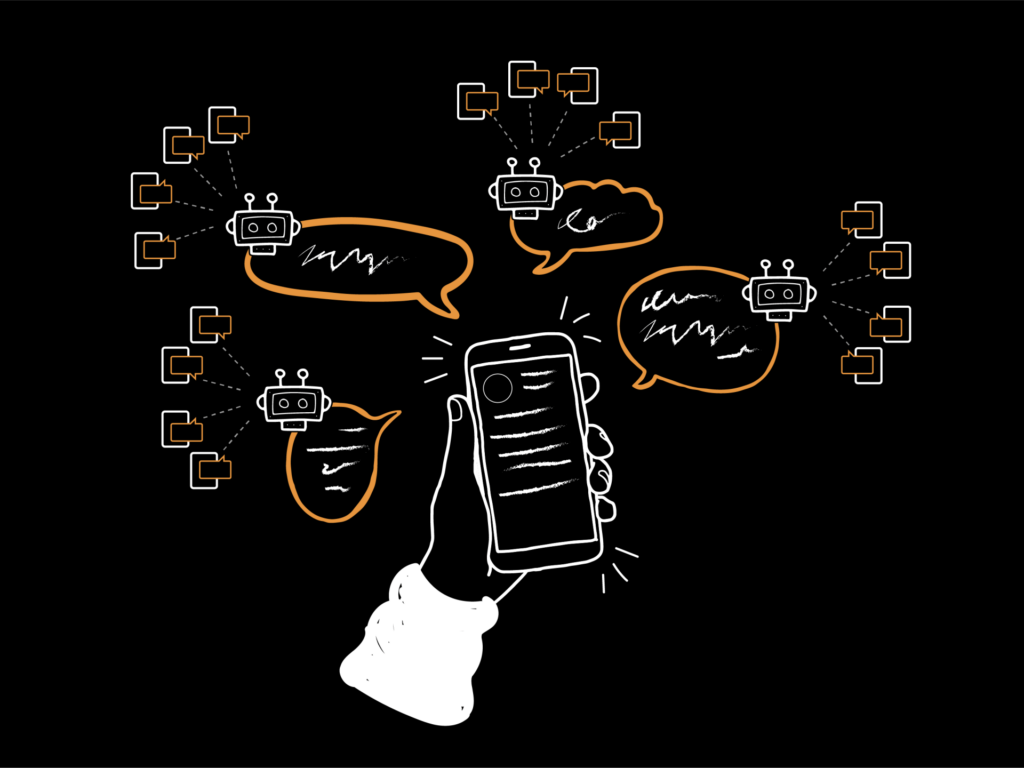Smart bots are playing a critical role in the ongoing conflict between Israel and Gaza, serving as an unexpected weapon in the war of information on social media. Researchers Ralph Baydoun and Michel Semaan from InflueAnswers have been monitoring the behavior of what appears to be “Israeli” bots on social media since October 7. Initially, pro-Palestinian accounts were dominating the social media landscape, but soon there was a significant increase in pro-Israeli comments. These comments, according to Semaan, are generated by bots that follow similar patterns and seem almost human, but are actually automated software programs.
Bots, short for robots, are designed to perform automated and repetitive tasks. While good bots can be beneficial by providing notifications, assisting with customer service, and helping discover content, bad bots can spread misinformation, manipulate social media follower counts, and engage in online harassment. The rise of artificial intelligence (AI) has led to a proliferation of bots on the internet, with nearly half of all internet traffic being attributed to bots by the end of 2023.
These bots, particularly the pro-Israeli ones identified by Baydoun and Semaan, aim to sow doubt and confusion about pro-Palestinian narratives rather than build trust with social media users. Bot armies, consisting of thousands to millions of malicious bots, are utilized in large-scale disinformation campaigns to sway public opinion. As bots become more advanced, they are becoming increasingly difficult to distinguish from human users, making it challenging to combat their spread of false information.
The evolution of bots has seen a shift from simple and rule-based operations to sophisticated AI-powered superbots. These superbots, powered by large language models (LLMs) like Chat GPT, can target high-value users, generate responses to social media posts, and engage in conversations with human users. Despite their advanced capabilities, there are still clues that can help identify whether an account is operated by a bot, such as profile characteristics, creation date, follower count, posting frequency, language, and targeting specific accounts.
Looking ahead, experts predict that AI-generated content will continue to dominate online platforms, with concerns about the use of deepfake images, audio, and videos to influence elections and public opinion. Digital rights activists are advocating for greater accountability from tech companies to protect against the spread of false information by bots and other malicious actors. As the battle between bots and human voices intensifies, the need for safeguards to preserve freedom of expression and combat disinformation becomes increasingly urgent.
#chatting #AIpowered #superbot
The key points of the article “Are you chatting with an AI-powered superbot?” are as follows:
1. Bots, short for robots, are software programs that perform automated, repetitive tasks. They can be good or bad, with bad bots being used to spread misinformation, manipulate social media, and harass people online.
2. Bots have become increasingly sophisticated, with the use of artificial intelligence (AI) to generate text and images. This has led to a rise in bot armies, which are used in large-scale disinformation campaigns to sway public opinion.
3. Superbots, powered by modern AI, are highly advanced bots that can mimic human-like responses. They can be deployed to target high-value users on social media and engage in conversations to sow doubt and confusion.
4. Spotting a superbot can be challenging, as they are designed to appear more human-like than traditional bots. However, there are still clues that can help identify them, such as AI-generated profile images, recent account creation dates, and strange language patterns.
5. The future implications of AI-powered bots are concerning, with predictions that by 2026, 90% of online content will be generated by AI. This raises concerns about the impact of AI-generated content on elections and freedom of expression.
Based on these insights, actionable advice can be provided to address the potential risks associated with AI-powered bots. This could include implementing stricter regulations on AI technology, increasing transparency around the use of bots on social media platforms, and educating the public on how to identify and report suspicious bot activity.
The long-term implications of AI-powered bots on online communication, democracy, and freedom of expression are significant. It is crucial for policymakers, tech companies, and individuals to be vigilant and proactive in addressing the challenges posed by AI-powered bots to ensure a safe and secure online environment for all users.

